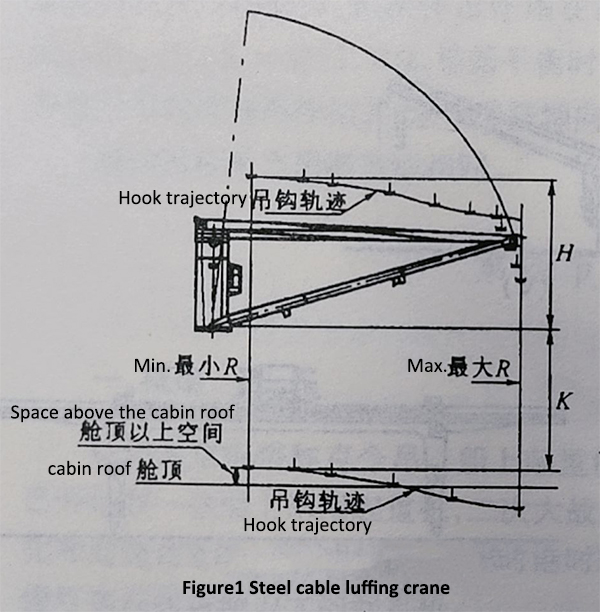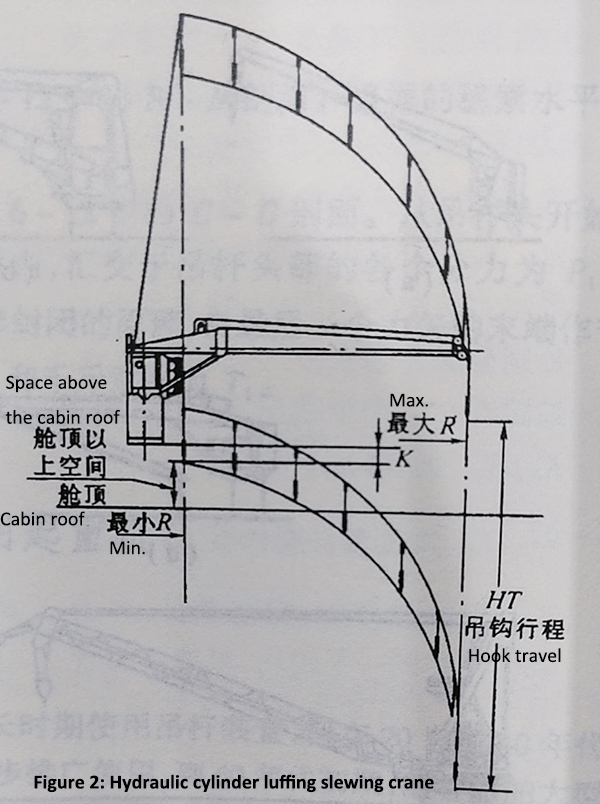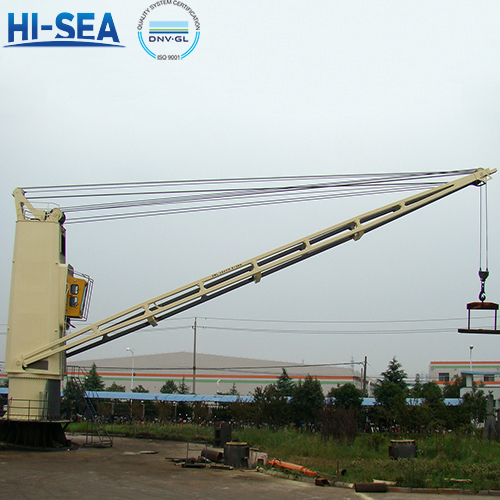
The slewing crane is the most commonly used type of marine crane, and what are its structural type?
The slewing crane is the most commonly used form of marine crane, with two structural forms. (1) At the upper end of the boom, there is a variable amplitude and a lifting steel cable leading to the upper part of the crane tower, and it has the performance of horizontal variable amplitude. That is, when the boom is variable, the position of the hook basically maintains horizontal movement, as shown in Figure 1. This type of crane is widely used. (2) The slewing end of the boom is located at the top of the tower, and the working radius is changed with the help of a variable amplitude oil cylinder. This structural form generally has no horizontal amplitude performance, as shown in Figure 2. This type of crane is mainly used in situations where the height of small and medium-sized ships and waterways is restricted.
Overview
The slewing crane is the most commonly used form of marine crane, with two structural forms.
(1) At the upper end of the boom, there is a variable amplitude and a lifting steel cable leading to the upper part of the crane tower, and it has the performance of horizontal variable amplitude. That is, when the boom is variable, the position of the hook basically maintains horizontal movement, as shown in Figure 1. This type of crane is widely used.
Figure 1: Steel cable luffing crane

(2) The slewing end of the boom is located at the top of the tower, and the working radius is changed with the help of a variable amplitude oil cylinder. This structural form generally has no horizontal amplitude performance, as shown in Figure 2. This type of crane is mainly used in situations where the height of small and medium-sized ships and waterways is restricted.
Figure 2: Hydraulic cylinder luffing slewing crane

For more marine crane information, kindly please click here.





